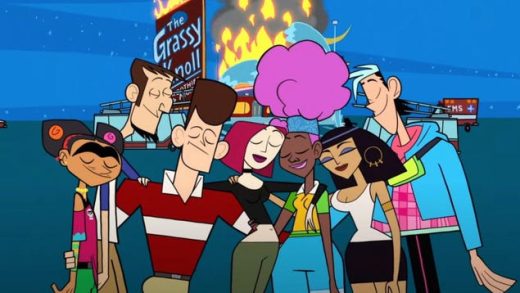Joker: Folie à Deux is an unfortunate hodgepodge of references to better, more interesting films, including musicals like The Umbrellas of Cherbourg and The Band Wagon. Now, we can add Christopher Nolan’s The Dark Knight to that mix, as Joker: Folie à Deux‘s final act seemingly hints at the origins of Heath Ledger’s take on the Joker, for which he posthumously won an Oscar for Best Supporting Actor.
‘Joker: Folie à Deux’ review: A middle-finger to fans of Lady Gaga, the DC movies, and musicals in general
But just what exactly is that hint at The Dark Knight, and why is it so misguided? Let’s break it down in this ending explainer for Joker: Folie à Deux.
How does Heath Ledger’s Joker figure into Joker: Folie à Deux?
The reference to Ledger’s Joker comes in the very last scene of the film, after we’ve already endured over two hours of Arthur Fleck’s (Joaquin Phoenix) murder trial and a barrage of musical numbers with less pizzazz than a sneeze. (Props to Lady Gaga and Phoenix for at least committing to the song and dance, something director Todd Phillips appears incapable of doing himself.) After the jury finds Arthur guilty on all counts, and after Lee Quinzel (Gaga) breaks things off with him for rejecting the fantasy of his “Joker” persona, Arthur winds back up in Arkham Asylum, alone.
Or perhaps not! Arkham guard Jackie Sullivan (Brendan Gleeson) tells Arthur he’s got a visitor. Could Lee be ready to take him back? Arthur follows Jackie to what could be a joyful reunion, only to be stopped by an unknown prisoner simply credited as Young Inmate (Connor Storrie). The inmate asks Arthur if he can tell him a joke, and Arthur seems happy to hear it. Maybe this inmate could be a new friend (or fan) of his, like recently deceased inmate Ricky Meline (Jacob Lofland).
The joke goes like this: A psychopath meets a drunk clown in a bar. The psychopath reveals that he used to watch the clown all the time as a kid, and that he’d like to get him a drink. What should he get him? The clown says if the psychopath is buying, he can get him whatever he wants. In that case, the psychopath chooses to get the clown “what he fucking deserves,” an echo of Joker’s last words to talk show host Murray Franklin (Robert De Niro) before shooting him in the head in Joker.
42 movies you’ll want to see this fall
The inmate follows Arthur’s murderous footsteps, punctuating his punchline by shanking Arthur. As Arthur bleeds out on the floor, his killer begins laughing uncontrollably. Then, just out of focus in the background, we see him carve a smile into his face, an unmistakable nod to The Dark Knight‘s Joker’s scars. Oh, brother.
Why is Joker: Folie à Deux‘s reference to The Dark Knight such a joke?
Ending Joker: Folie à Deux on this presumable origin story for Ledger’s Joker is a laughable choice for so many reasons. For one, tethering yourself to the greatest live-action Joker performance of all time — especially after emphasizing that the Joker films are set apart from any other DC movie — reaches masturbatory levels of self-congratulation. “Look, we’ve connected both Jokers that have won Oscars! In fact, one now canonically inspired the other!”
That matter of inspiration, and the idea that Ledger’s Joker is somehow taking up the mantle of Phoenix’s are the scene’s other massive problems. Let’s look at how The Dark Knight‘s Joker handles his own origin story. He turns it into a kind of game, offering up contradictory stories about how he got his scars. These differing possibilities are just one of the many ways in which he presents himself as an agent of chaos. In fact, his whole appeal and danger lie in the fact that he’s slippery, an unknowable figure. That Joker: Folie à Deux seeks to give him a more tangible backstory is to undermine him entirely. Ledger’s iconic refrain of “Wanna know how I got these scars?” simply isn’t Folie à Deux‘s to answer.
Sure, the moment of self-mutilation is obscured enough — and the Young Inmate such a nothing of a character — that Joker: Folie à Deux could have plausible deniability as to whether this is actually meant to be the start of Ledger’s Joker. (The timeline of Ledger’s Joker being in Arkham in the 1980s, when the Joker films are set, is also a bit of a stretch.) But Storrie’s hunched shoulders in the scene do call to mind Ledger’s physical performance, and by this point in pop culture, the scarred smile is synonymous with The Dark Knight‘s take on the Clown Prince of Crime. If Joker: Folie à Deux‘s Young Inmate isn’t actually Ledger’s Joker, he’s still meant to make you think of him. And for a film that relies so much on cheap, superficial associations over actual meaning, that crime is just as bad.
Joker: Folie à Deux is now in theaters.














